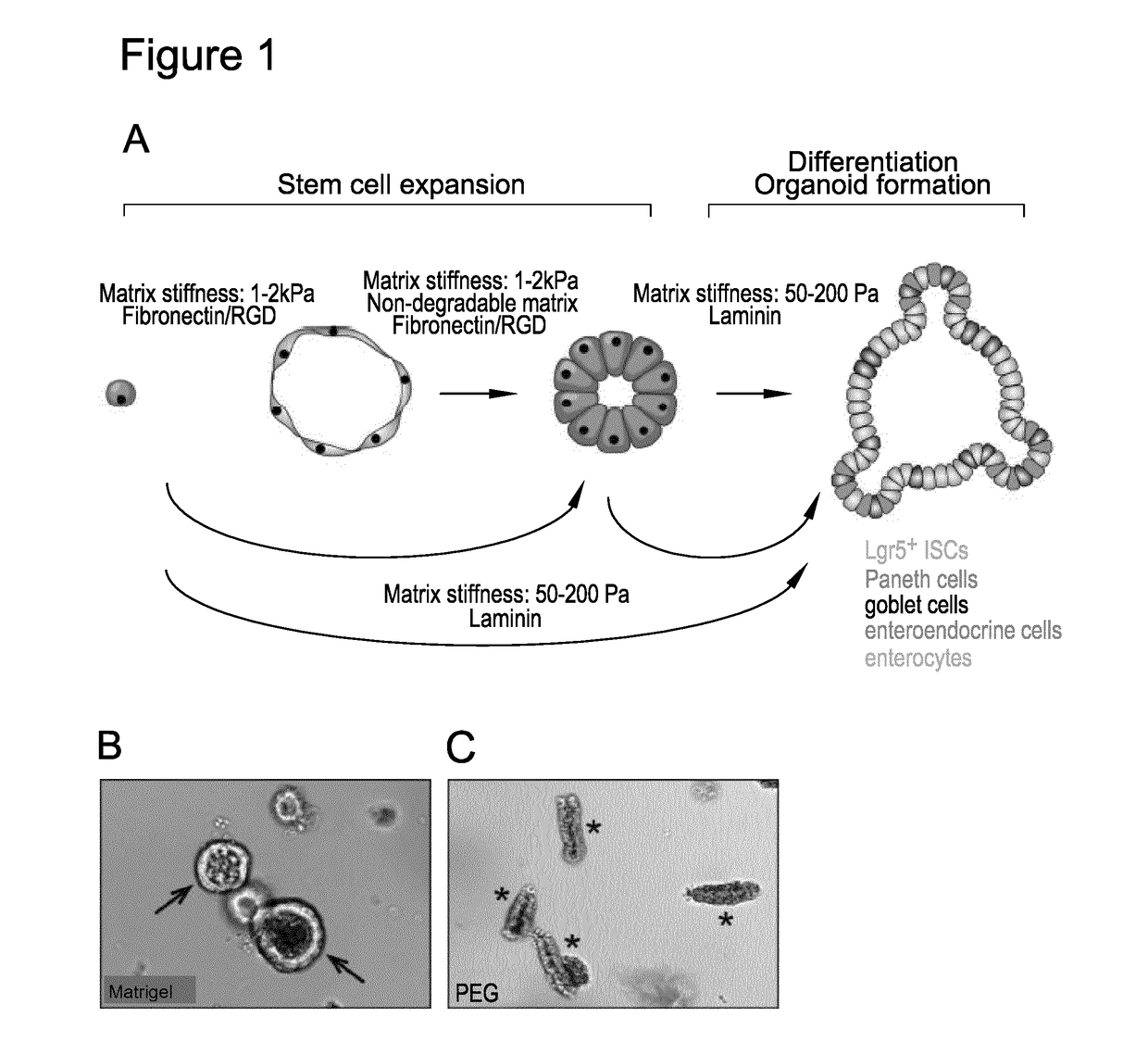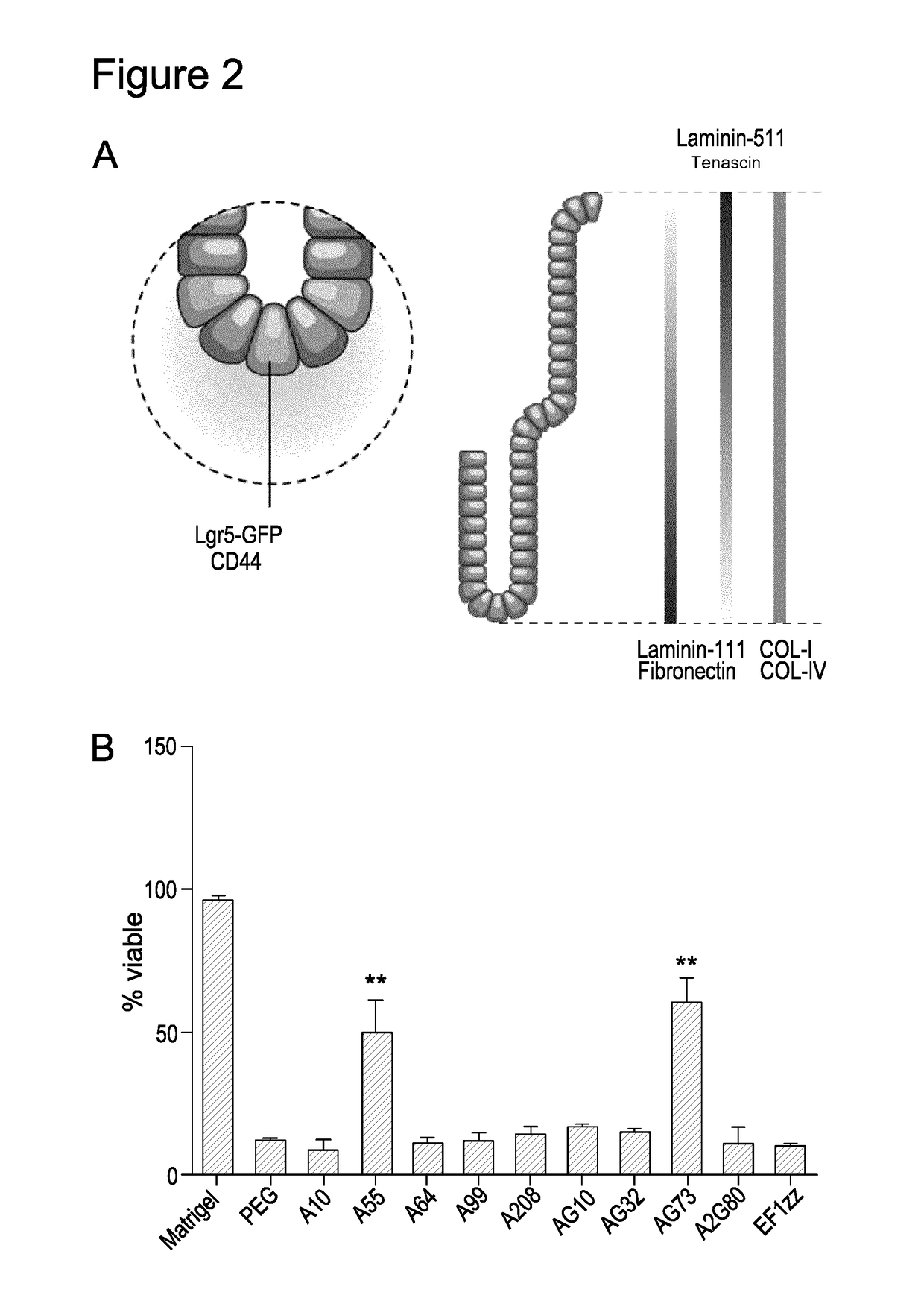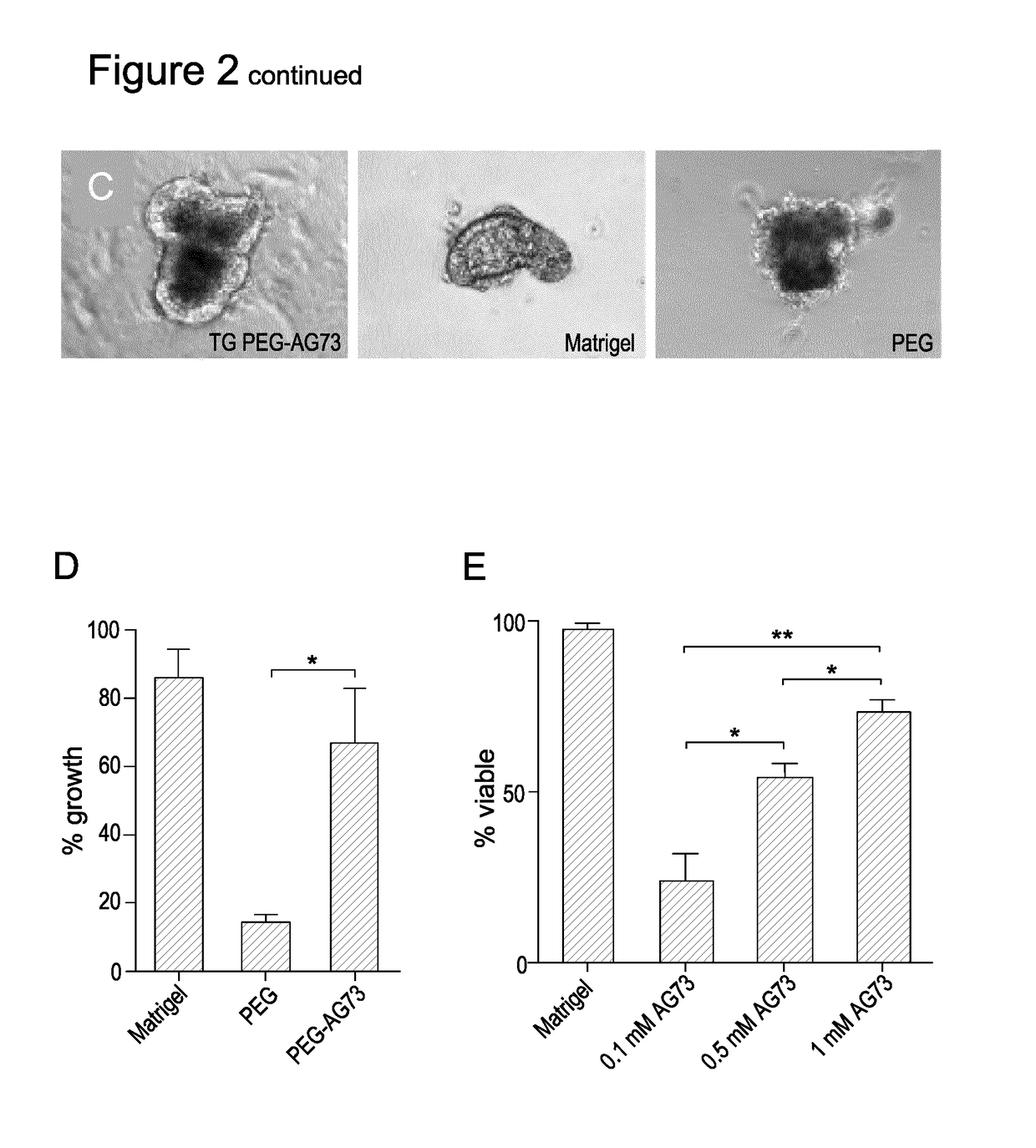Three dimensional hydrogels for culturing organoids
a three-dimensional hydrogel and organoid technology, applied in the field of three-dimensional hydrogel culture of adult epithelial cells, can solve the problems of high attrition rate, failure to progress beyond phase i clinical trials, and failure of high-throughput screening of compounds, so as to improve colony formation efficiency, and improve the effect of crypt survival
- Summary
- Abstract
- Description
- Claims
- Application Information
AI Technical Summary
Benefits of technology
Problems solved by technology
Method used
Image
Examples
example 1
Bioactive Hydrogels Can Support Growth of Epithelial Cells
[0145]Matrigel is currently used to grow epithelial organoids. To address the question of whether Matrigel serves as merely a passive 3D scaffold, providing physical support, or actively influences organoid formation by presenting essential cues, freshly-isolated intestinal crypts were embedded into enzymatically crosslinked PEG hydrogels, which are soft and hydrated and thus mimic the basic physical properties of Matrigel without providing any biochemical signals. Crypts cultured in Matrigel reorganized within 24 hours to form lumen-containing epithelial colonies, whereas those embedded in PEG failed to reorganize and underwent cell death within the same period (FIG. 1B and FIG. 1C), suggesting that not only the physical support, but also active biochemical signals provided by the matrix are required for crypt viability and morphogenesis.
[0146]The intestinal epithelium in vivo is in direct contact with a basement membrane, w...
example 2
Biomolecule Incorporation into Functionalised Hydrogels
[0149]Modifying the structure of the PEG macromolecules in a first crosslinking reaction facilitated production in the second crosslinking reaction of low solid content hydrogels that could be rendered biofunctional without affecting their mechanical properties.
[0150]To incorporate the AG73 ligand at a high density, a functional molecule was designed wherein the AG73 sequence was flanked by two short cysteine-containing sequences. VS-conjugated 4-arm liquid PEG macromolecules were covalently linked into solid hydrogels through Michael-type addition between VS groups and the thiols of a short crosslinker containing two cysteine residues. The resulting 3, 3.5 and 4% PEG gels (hereafter referred to as MT-PEG-AG73) presented the AG73 ligand at concentrations of 3.1, 3.7 and 4.2 mM, respectively, thus far surpassing the highest concentration achieved in the enzymatically crosslinked matrices. These matrices were considerably softer t...
example 3
Functionalised Hydrogels Support Organoid Maintenance
[0151]The functionalised hydrogels were able to support epithelial organoid maintenance within intestinal tissue fragments. Embedding intestinal tissue fragments into MT PEG-AG73 revealed that the percentage of tissues that remained viable and continued to undergo morphogenesis approached that observed in Matrigel (FIG. 3B and FIG. 3C).
[0152]ISCs encapsulated into functionalised bioactive hydrogels (4- and 8-arm MT PEG-RGD) containing either 0.5 of 1 mM RGD at different stiffness were also able to support ISC proliferation (FIG. 3A).
[0153]To verify the maintenance of ISCs within the organoids grown in MT-PEG-AG73 and MT PEG-RGD, tissues extracted from the Lgr5-EGFP reporter mouse were embedded into the synthetic hydrogels and EGFP (Enhanced green fluorescent protein) expression was monitored. Lgr5-EGFP was expressed in the expected pattern, localized to the crypt-like buds of the organoids (FIG. 3B). The fraction of organoids expr...
PUM
| Property | Measurement | Unit |
|---|---|---|
| shear modulus | aaaaa | aaaaa |
| shear modulus | aaaaa | aaaaa |
| shear modulus | aaaaa | aaaaa |
Abstract
Description
Claims
Application Information
 Login to View More
Login to View More - R&D
- Intellectual Property
- Life Sciences
- Materials
- Tech Scout
- Unparalleled Data Quality
- Higher Quality Content
- 60% Fewer Hallucinations
Browse by: Latest US Patents, China's latest patents, Technical Efficacy Thesaurus, Application Domain, Technology Topic, Popular Technical Reports.
© 2025 PatSnap. All rights reserved.Legal|Privacy policy|Modern Slavery Act Transparency Statement|Sitemap|About US| Contact US: help@patsnap.com



